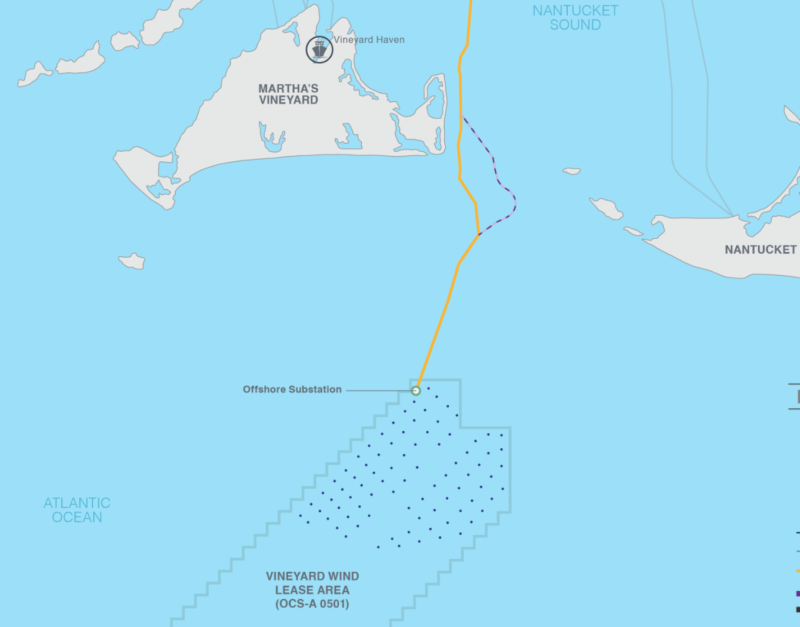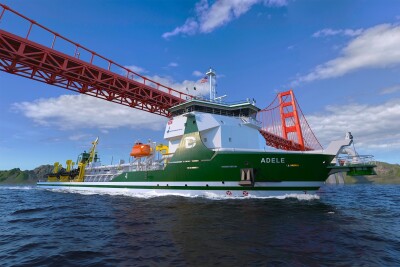A wider federal study of the Vineyard Wind project and cumulative impacts of offshore wind development off the East Coast is holding to schedule despite the coronavirus crisis, with a decision expected by December, a top federal official said Tuesday.
With their offices closed, federal Bureau of Ocean Energy Management reviewers are working remotely to compile findings toward a final environmental impact statement for the 804-megawatt Vineyard Wind project off southern New England, said James Bennett, chief of BOEM’s renewable energy program.
But public health measures to combat the spread of coronavirus have derailed the agency’s plans for gathering stakeholder comment including public hearings starting in June, Bennett said during IPF20 Virtual, an online conference hosted this week by the Business Network for Offshore Wind.
“We’re in the process now of planning some kind of virtual event” that would similarly inform the public of what BOEM has been finding, and gather in additional information and comments, Bennett told news reporters during a media availability Tuesday morning.
The public comment process required by the National Environmental Policy Act is another avenue that is bringing formal and written commentary into the review as well, he said.
Vineyard Wind had appeared to be on track to obtain its environmental assessment from BOEM in summer 2019, clearing a path to potentially begin preliminary construction in 2020 and the first large utility-scale offshore wind project in federal waters.
But when the National Marine Fisheries Service Great Atlantic Regional Fisheries Office balked at signing off on the review, Department of Interior Secretary David Bernhardt got involved, and directed BOEM undertake a broader look at the potential impact of Vineyard Wind on fisheries, maritime uses and the environment.
That unexpected delay took Vineyard Wind and other developers by surprise and slowed the pace of rapidly building up to a new U.S. offshore industry.
But Bennett and other speakers in the IPF20 event said much of the groundwork preparation is proceeding apace, with 16 projects planned of proposed off the East Coast. BOEM is looking to map out additional wind energy areas in the Gulf of Maine, the New York Bight and off the Carolinas.
The agency has marked out three potential areas off California, where older power generators are being retired and state officials have an ambition of achieving 100% renewable power by mid-century. A new trade group, Offshore Wind California, advocates for 10 gigawatts of offshore generation by 2040.
But as in the Gulf of Maine, developing wind energy in deep water off the West Coast will require the use of more expensive floating turbine platforms, and reconciling with fishing and other maritime uses.
“The demand for offshore wind has never been greater,” said Bennett, whose agency is reviewing seven building and operations plans from developers and expects to receive five more this year.
“We anticipate the coming decade is going to see 12, 15 or even more projects on the East Coast,” he added.
Still, the industry will need new lease offerings to move forward and develop, contends Bill White, managing director of EnBW North America, a German wind development company focused on the U.S. Mid-Atlantic region.
Developer Ørsted was one of only three bidders and winner of New Jersey’s first power procurement agreement in December 2018, while developer Equinor with its Empire Wind project off New York Harbor won the first round for New York state, said White.
With leases off New Jersey already acquired by Ørsted, Equinor and a joint venture by EDF Renewables/Shell New Energies, “we’re having a more constricted market here” until BOEM offers additional leases in the New York Bight, he said. Otherwise there could potentially be only a single bidder when New Jersey’s ambitious offshore energy program seeks its next procurement, he added.
Another fact is “not all lease areas are developable,” said White. They won’t be fully built out because accommodations must be made for fishing, other maritime uses and environmental factors, he said.





